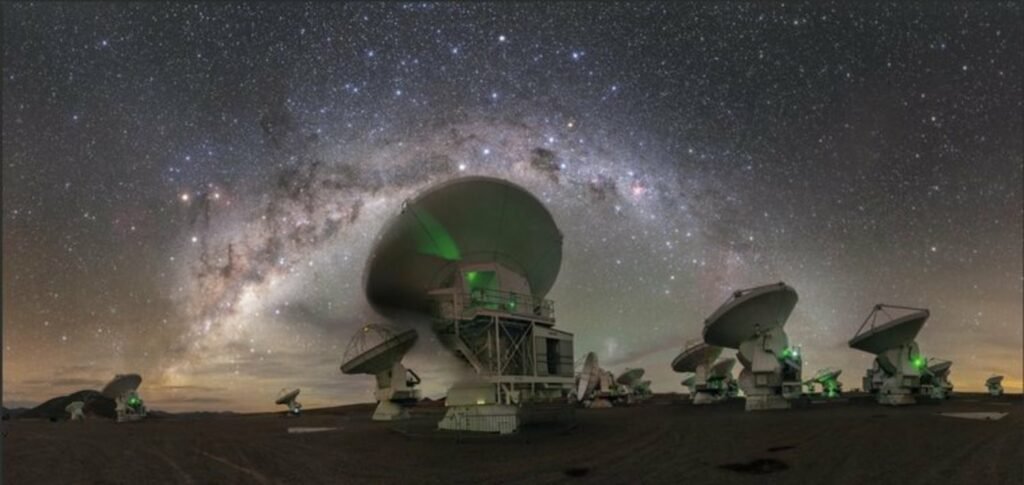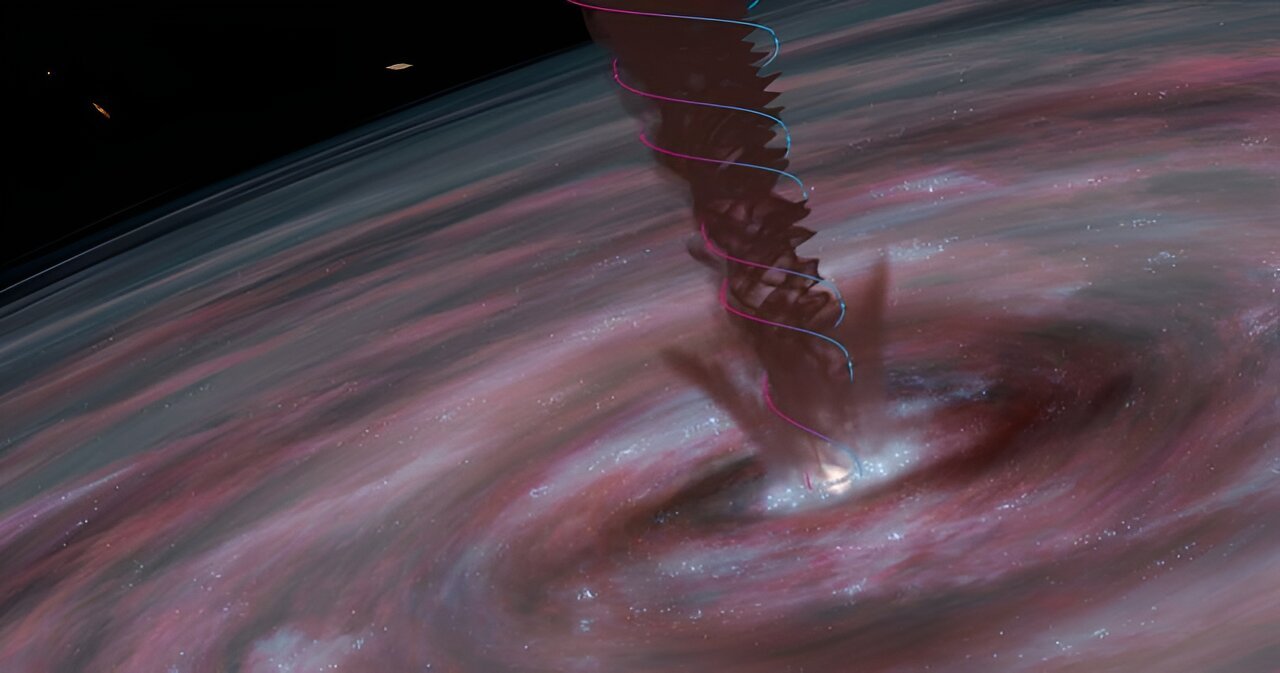Astronomers have discovered powerful magnetic winds emanating from the luminous infrared galaxy ESO 320-G030, and according to the astronomers who discovered it, the local black hole is using this magnetic wind to grow.
Published in the journal Astronomy & Astrophysics, the research offers new insights into how galaxies evolve and regulate the growth of their central supermassive black holes.
Black holes are regions in space where gravity is so strong that nothing, not even light, can escape from them. They are formed when massive stars collapse under their own gravity at the end of their life cycles. Supermassive black holes, which are millions to billions of times the mass of the Sun, reside at the centers of many galaxies, including our own Milky Way. They play a crucial role in galaxy evolution by influencing the motion of stars and gas around them.
Enter magnetic winds; streams of charged particles are driven by magnetic fields. These galaxy shaping winds are immense streams of gas that can blow out from the centers of galaxies, potentially influencing their development by removing gas that would otherwise fuel star formation and black hole growth. The origins of these winds have been a topic of intense debate among scientists, with theories suggesting they could be driven by jets from black holes, radiation, or magnetic forces.
But these latest findings indicate that these magnetic winds may actually be helping these black holes grow.
Led by Mark Gorski and Susanne Aalto, an international team of researchers focused their attention on ESO 320-G030, an isolated galaxy located about 36 million light-years from Earth. This galaxy is notable for its compact obscured nucleus, a dense and dusty region that conceals a growing super massive black hole. The team utilized the Atacama Large Millimeter/submillimeter Array, also known as ALMA, in Chile to observe ESO 320-G030 with unprecedented detail. Its high-resolution capabilities allowed the researchers to map the galaxy’s core and its molecular outflow with a resolution of about 5 parsecs (roughly 16 light-years).


“Since this galaxy is very luminous in the infrared, telescopes can resolve striking details in its centre,” explained Susanne Aalto, Professor of Radio Astronomy at Chalmers University of Technology in a press release. “We wanted to measure light from molecules carried by winds from the galaxy’s core, hoping to trace how the winds are launched by a growing, or soon to be growing, supermassive black hole. By using ALMA, we were able to study light from behind thick layers of dust and gas.”
Based upon their observations, the researchers concluded that the outflow in ESO 320-G030 is powered by a magnetic wind driven by magnetic fields rather than feedback from star formation. This finding is significant because it suggests that galaxies can regulate their nuclear growth through magnetic processes, similar to the way protostars grow.
In simple terms, material like dust and gas circles around the outer edge of the black hole before it falls into it, much like water circling a sink drain. All that matter gets collected around the edge of the black hole, spinning around and getting ripped apart by the sheer gravity of it. According to the research, this is where magnetic fields start to form and grow stronger as that spin intensifies. These magnetic fields help lift up some of that debris and push it outwards away from the black hole, as a sort of spiral tornado-like wind. As that wind frees some of that matter from getting consumed by the black hole, that violent spinning disk around the black hole loses some of its intensity, and it slows, allowing the rest of the matter not ‘saved’ by the magnetic wind to fall into the black hole, allowing it to grow.
The magnetic wind is able to yank some matter away from the black hole, but as it does, the spin of the black hole’s outer edge slows, allowing what’s left to fall in. Think of a terrifying centrifugal force merry-go-round where everyone is being pushed to the outer edge of the ride because of its spin, but then it slows down, that centrifugal force dissipates, and everyone gets sucked into the ride’s center experiencing a horrifying singularity where their bodies are ripped apart like spaghetti by gravity.
“We can see how the winds form a spiraling structure, billowing out from the galaxy’s center. When we measured the rotation, mass, and velocity of the material flowing outwards, we were surprised to find that we could rule out many explanations for the power of the wind, star formation for example,” Aalto says. “Instead, the flow outwards may be powered by the inflow of gas and seems to be held together by magnetic fields.”
The researchers note that this black hole formation is similar to how stars form.
“It is well-established that stars in the first stages of their evolution grow with the help of rotating winds – accelerated by magnetic fields, just like the wind in this galaxy,” Mark Gorski explained in a statement. “Our observations show that supermassive black holes and tiny stars can grow by similar processes, but on very different scales.”
This study provides new evidence that magnetic forces can drive galactic winds, offering a new perspective on how galaxies and their central black holes evolve. The next step is to find other super massive black holes being fed by these magnetic winds, and prove that ESO 320-G030 is not a unique phenomena.
Now that we know what to look for, the next step is to find out how common a phenomenon this is,” Gorski says. “And if this is a stage which all galaxies with supermassive black holes go through, what happens to them next?”
MJ Banias covers space, security, and technology with The Debrief. You can email him at mj@thedebrief.org or follow him on Twitter @mjbanias.

